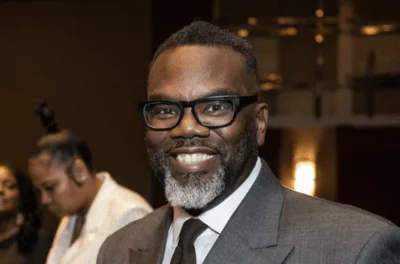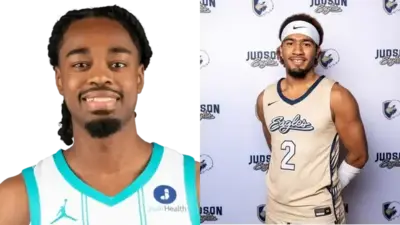Howard Chrisman, MD, Chief Executive Officer | Northwestern Medicine
Howard Chrisman, MD, Chief Executive Officer | Northwestern Medicine
A 37-year-old mother from Elmhurst, Illinois, Michaela Del Barrio, credits a high-risk breast cancer assessment at Northwestern Medicine with the early detection of her cancer. Despite having a family history of breast cancer and voicing her concerns to doctors in her twenties, Del Barrio was initially told she was too young for screening. She persisted in seeking answers and after the birth of her second child at age 35, brought up her concerns again with her OB-GYN and primary care physician.
Following the completion of breastfeeding, Del Barrio underwent her first mammogram, which did not show any abnormalities. However, she was referred to a high-risk breast clinic at Northwestern Medicine Oak Brook Outpatient Center for further evaluation.
At the clinic, Spring Piatek, APRN, conducted an assessment that included reviewing Del Barrio’s medical and family history as well as a clinical exam. The Tyrer-Cuzick risk assessment tool determined that Del Barrio had a 22% lifetime risk for developing breast cancer—above the threshold qualifying her for enhanced screenings such as MRI.
In January 2025, a breast MRI revealed two suspicious masses that were not detected by mammogram eight months prior. A biopsy confirmed early-stage invasive ductal carcinoma.
Dr. Annabelle Veerapaneni, an oncologist at Northwestern Medicine Cancer Center Oak Brook, emphasized the importance of advanced imaging for younger women with dense breast tissue: “Breast imaging with an MRI is going to be much more sensitive and pick up things that a mammogram would not. Given the fact that she's premenopausal, when women are young, dense breast tissue can make it very challenging to identify lesions on a routine mammogram,” Veerapaneni said.
“When women meet the criteria for breast MRI imaging, it’s crucial they proceed with those recommendations,” she added.
Dr. Veerapaneni also highlighted the importance of knowing one's family medical history: “I have heard of instances where young women say their concerns were downplayed by other health care providers or even family members and other loved ones because they say, ‘You're too young to get it,’” she said.
She encouraged self-advocacy among patients: “That's the reason why we have these high-risk breast clinics,” Veerapaneni said. “Michaela did the absolute right thing. A lot of people are aware of a family history and want to make sure. Michaela recognized she was at higher risk and advocated for herself.”
Del Barrio expressed hope that sharing her experience would motivate others: “I’m just trying to pay it forward,” she said. “If I had waited until I was 40, I don’t even know what would have happened.”
“For women under 40 with small children, it feels like there isn’t enough time to take care of yourself,” Del Barrio continued. “But the most important thing you can do for your family is to prioritize yourself.”
Northwestern Medicine provides resources such as an online assessment tool to help women evaluate their risk factors for breast cancer and access appropriate screenings through their Breast Health Program. More information about services offered can be found on their website: https://www.nm.org/conditions-and-care-areas/womens-health/breast-health/breast-risk-assessment-and-prevention-program.






 Alerts Sign-up
Alerts Sign-up